Some of the CC&G posse (Francis, Keith, & Courtney) joined me this weekend for a trip to St Joseph, MO and a couple stops along the way. We visited so many awesome places it's going to take me awhile to get organized. Luckily, Jim the Wonder Dog's Memorial Garden in Marshall, MO tells its own story. To see a larger version, click on a picture, and then click on it again at the Photobucket website.
Jim the Wonder Dog's Memorial Garden is located at 101 North Lafayette and his grave is located at 801 E Yerby. Marshall, MO is just north of Highway 70, about 60 miles west of Columbia (180 miles from St Louis).
Monday, November 29, 2010
Thursday, November 25, 2010
Happy Thanksgiving!
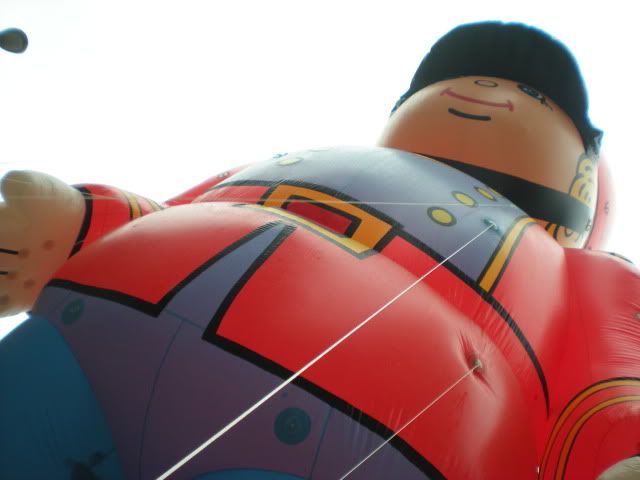
Francis and I were part of the balloon wrangling team this morning with one of my favorite charities, Annie's Hope. I didn't get many pictures because it was cold and raining, and we had a balloon that was really difficult to manage in the wind, but you can see more behind-the-scenes parade details in my post from 2008 by clicking here.
Since I feel obligated to give you some kind of educational content, did you know today is the 93rd Turkey Day football game between the Webster Groves Statesmen and the Kirkwood Pioneers? It's the oldest high school football rivalry west of the Mississippi. The trophy for the game is called the Frisco Bell, being as it is a bell from a retired locomotive that was donated by the Frisco Railroad in the 1950s. One of the reasons that the St Louis Rams do not play on Thanksgiving (according to wikipedia, so take that as you will) is because of the Kirkwood/Webster game. The St Louis (football, now Arizona) Cardinals tried to have Thanksgiving Games in the 1970s but gave up after 3 years and hosting reverted to Dallas.
I myself am a Webster Groves alum. GO STATESMEN! I can't bear the thought of going back out in this nasty weather, but I am with them in spirit, from my couch, in my orange and black sweats.
Labels:
st louis
Sunday, November 21, 2010
The Magic House
I think The Magic House is one of St Louis's most underrated attractions, probably because it's called a Children's Museum. The City Museum gets all the hype, and it is great, but I realized after a trip to The Magic House that you don't actually learn a whole lot at the City Museum, you just run wild and climb on things.
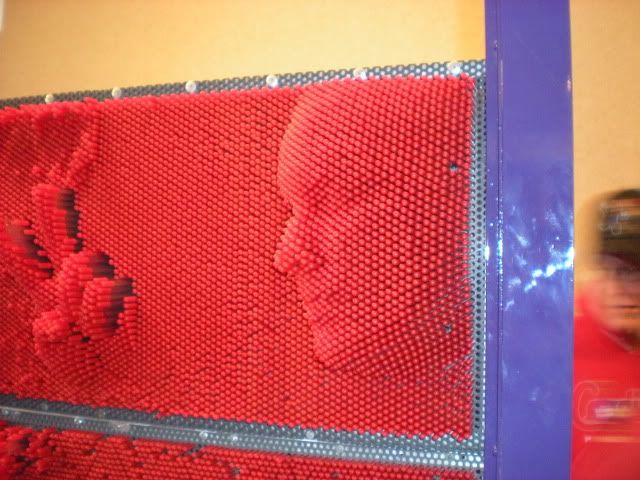
The Magic House is awesome because every single thing you play with is teaching you something, and it is all totally engaging, regardless of your age. On this visit a couple weekends ago I was joined by Francis, Amy, Kevin, and Rich, and no kids. The five of us are 25-32 and played for 3 hours straight. Then we took a snack break at the cafe (which is way cheaper than the average tourist attraction) and realized we still hadn't hit an entire wing of the building.
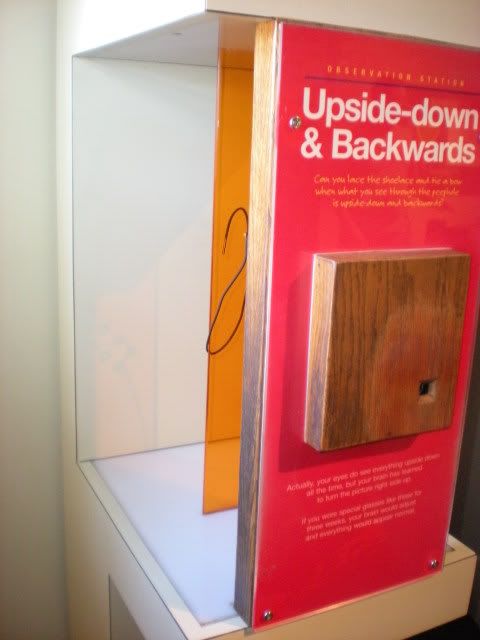
If you are our age and don't have kids, or if your kids are grown, it has probably been awhile since you visited The Magic House. You probably remember it as a house. A giant Victorian mansion, but a house all the same. Since then, they have added two major additions, and you can barely see the original house anymore!

Still, a lot of the same exhibits from the original house are still around. You might recognize some of them in the first few pictures. (And yes, the electrostatic generator is still there.) The museum itself covers so much ground and so many different topics that this blog post would go on forever if I used all my pictures. Instead, I'm just going to tell you about my two favorite parts.
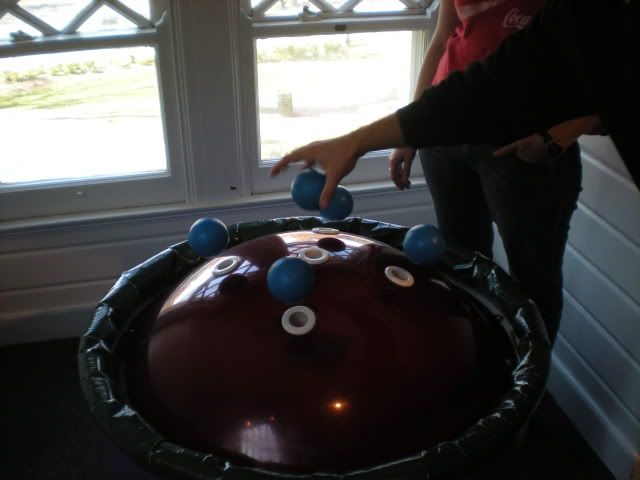
First of all, the reason I jumped on the Groupon (5 admissions for $20) a couple months ago is because in my day job, as a commercial flooring estimator, I bid the most recent addition. We didn't actually do the work here, but I'd seen the drawings and wanted to see how some of the concepts went from blueprint to real-world.
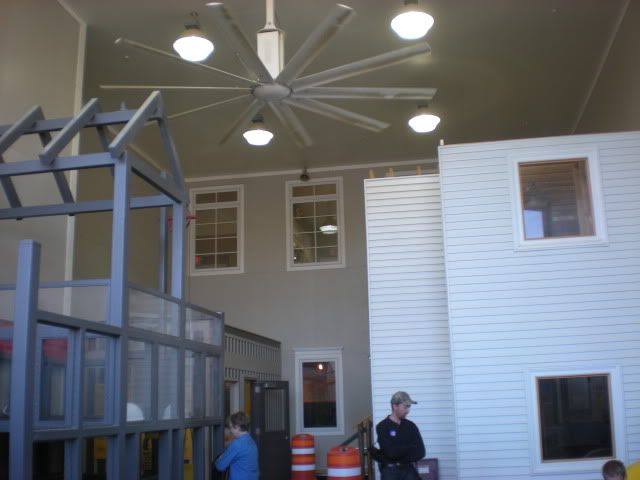
How excited was I to see that they have a whole construction site outside for kids to learn about how a house is built? This part wouldn't have been on the drawings that I saw, because it is outside.
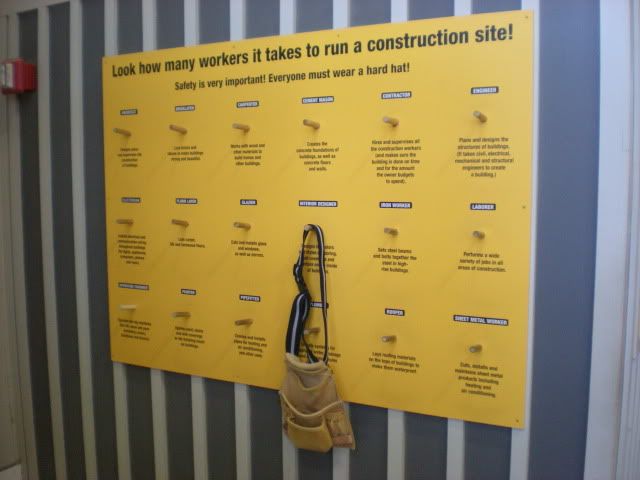
They have hard hats and tool belts, and all kinds of stations that show the different steps from concept to completion. This is my job, here in the construction trailer.
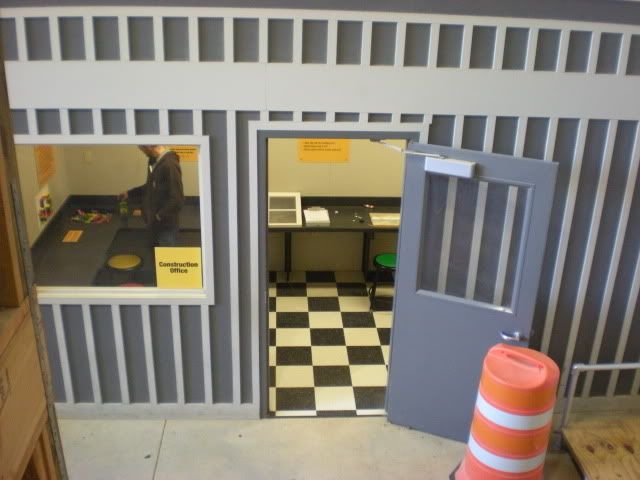
They have blueprints to show how to estimate materials, and design boards to show how architects pick out finishes.
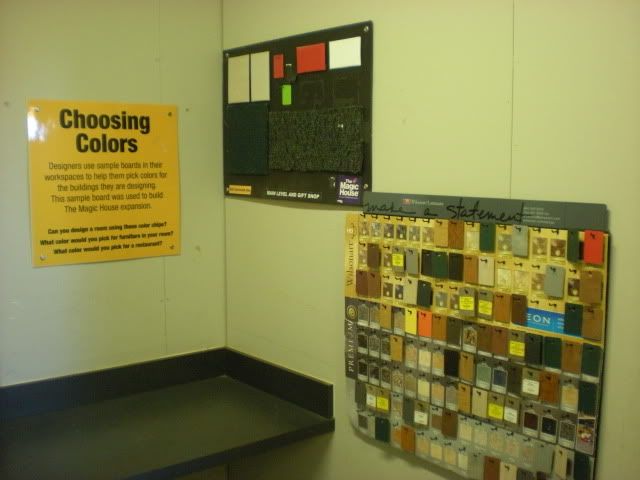
Over in the house under construction, you learn how to lay floors and install insulation.

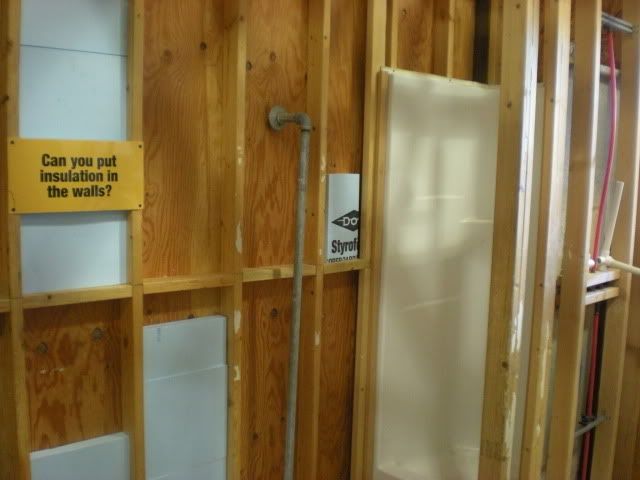
I know I said I was going to stick to my two favorite areas, but I have to cheat a little bit to show you one of the things I most wanted to see, based on the blueprints.
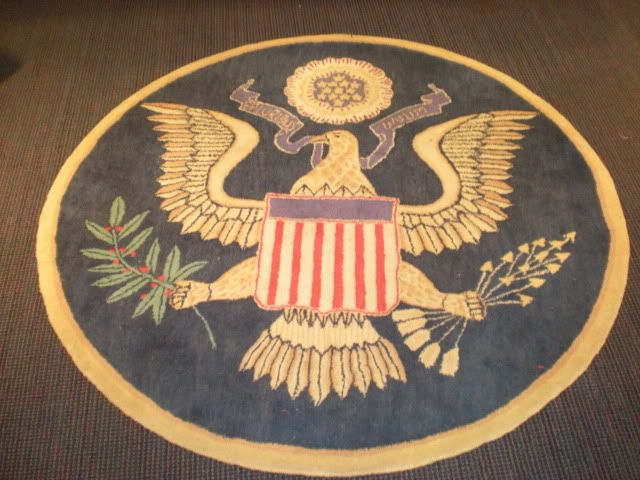
A replica of the Presidential Seal rug from the Oval Office! I also just have to sneak in this gratitous picture of the Presedential mouse hole, because it's cute, and I had to lay on the ground to get the picture:
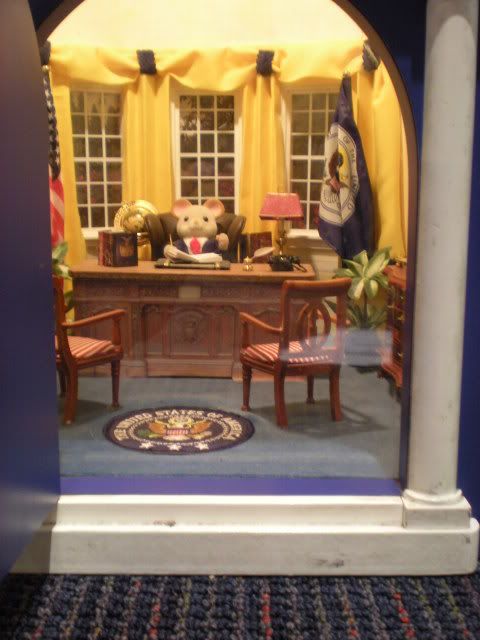
I see that and wonder which trade had to estimate/build that little cubby, and how much it must have brightened their day, even if they won't admit it. There's a reason everyone in town bids these kinds of jobs, because it's a break from the monotony of "office, school, hospital, office, school, hospital."
Onward to the VERY BEST PART! I remember my young cousins being in town a few years ago and telling me about this, and I was so mad that I'd been unable to get the day off.
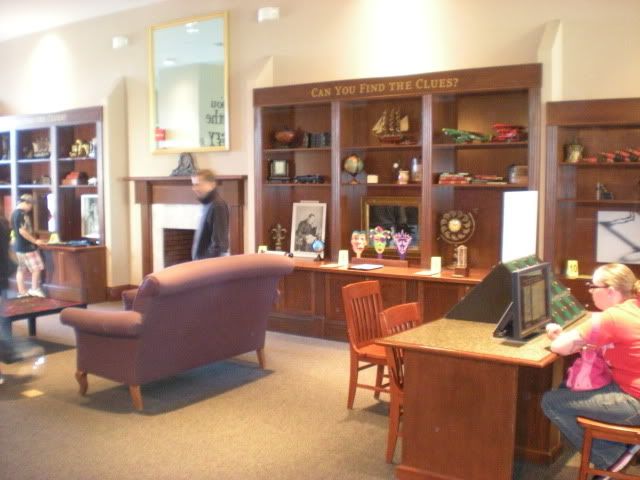
It's a Sherlock Holmes mystery to solve! Grab your detective notebook and pencil and follow the clues!
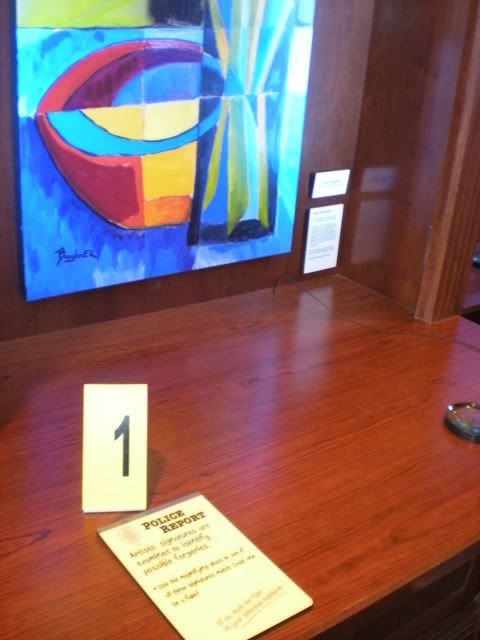
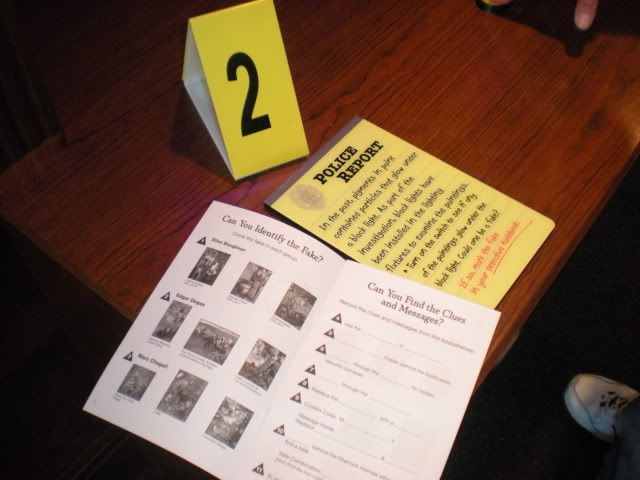

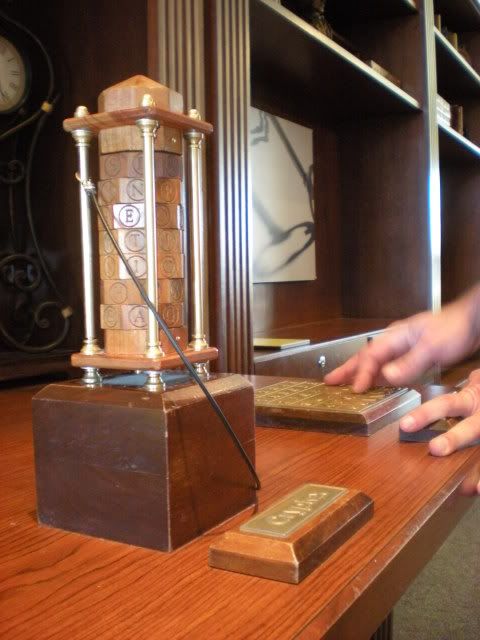
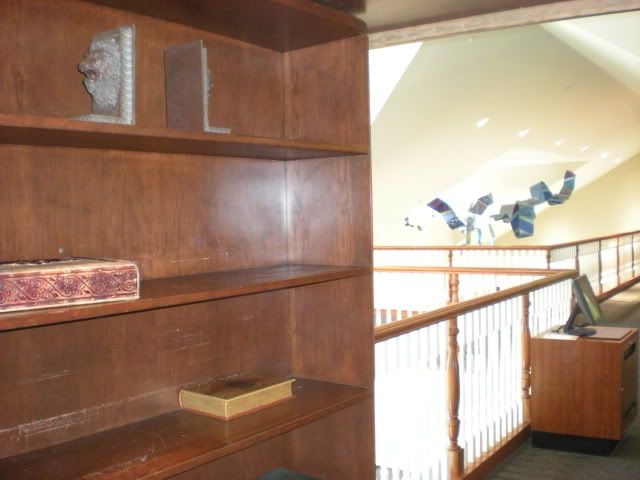
The secret passage through the bookshelf gets you into a room where you can climb into the ductwork to find another clue. This was one of the very few things in the museum we were too big for (along with all the trenchcoats, lab coats, superhero capes, judges robes, and any other costumes I may have missed). Then you move into the lab to analyze the evidence.
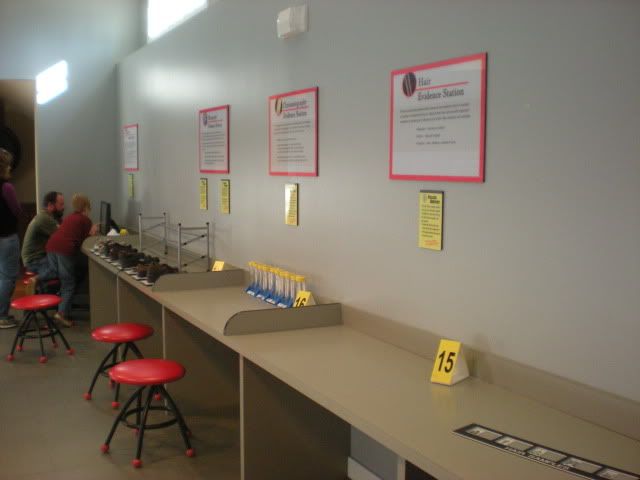
This part was my favorite not only because it was fun to solve, but also because it illustrates perfectly how well the museum is designed for parents and kids to work together. It wasn't too hard for kids to figure out, and it wasn't so easy that parents would get bored.
I hate to end it here. I left out so much good stuff, including the Math Path, the Lewis and Clark obstacle course, the whole wing on government with its scavenger hunt and karaoke, the Super Kids Save the World (limited engagement through January 17), the Water Works, the Bubble Room, and so much more! I guess you will just have to check it out for yourself. Admission is $8.75 for ages one and up. Hours vary by season, so check the website (linked at the beginning of this post).

The Magic House is awesome because every single thing you play with is teaching you something, and it is all totally engaging, regardless of your age. On this visit a couple weekends ago I was joined by Francis, Amy, Kevin, and Rich, and no kids. The five of us are 25-32 and played for 3 hours straight. Then we took a snack break at the cafe (which is way cheaper than the average tourist attraction) and realized we still hadn't hit an entire wing of the building.

If you are our age and don't have kids, or if your kids are grown, it has probably been awhile since you visited The Magic House. You probably remember it as a house. A giant Victorian mansion, but a house all the same. Since then, they have added two major additions, and you can barely see the original house anymore!

Still, a lot of the same exhibits from the original house are still around. You might recognize some of them in the first few pictures. (And yes, the electrostatic generator is still there.) The museum itself covers so much ground and so many different topics that this blog post would go on forever if I used all my pictures. Instead, I'm just going to tell you about my two favorite parts.

First of all, the reason I jumped on the Groupon (5 admissions for $20) a couple months ago is because in my day job, as a commercial flooring estimator, I bid the most recent addition. We didn't actually do the work here, but I'd seen the drawings and wanted to see how some of the concepts went from blueprint to real-world.

How excited was I to see that they have a whole construction site outside for kids to learn about how a house is built? This part wouldn't have been on the drawings that I saw, because it is outside.

They have hard hats and tool belts, and all kinds of stations that show the different steps from concept to completion. This is my job, here in the construction trailer.

They have blueprints to show how to estimate materials, and design boards to show how architects pick out finishes.

Over in the house under construction, you learn how to lay floors and install insulation.


I know I said I was going to stick to my two favorite areas, but I have to cheat a little bit to show you one of the things I most wanted to see, based on the blueprints.

A replica of the Presidential Seal rug from the Oval Office! I also just have to sneak in this gratitous picture of the Presedential mouse hole, because it's cute, and I had to lay on the ground to get the picture:

I see that and wonder which trade had to estimate/build that little cubby, and how much it must have brightened their day, even if they won't admit it. There's a reason everyone in town bids these kinds of jobs, because it's a break from the monotony of "office, school, hospital, office, school, hospital."
Onward to the VERY BEST PART! I remember my young cousins being in town a few years ago and telling me about this, and I was so mad that I'd been unable to get the day off.

It's a Sherlock Holmes mystery to solve! Grab your detective notebook and pencil and follow the clues!





The secret passage through the bookshelf gets you into a room where you can climb into the ductwork to find another clue. This was one of the very few things in the museum we were too big for (along with all the trenchcoats, lab coats, superhero capes, judges robes, and any other costumes I may have missed). Then you move into the lab to analyze the evidence.

This part was my favorite not only because it was fun to solve, but also because it illustrates perfectly how well the museum is designed for parents and kids to work together. It wasn't too hard for kids to figure out, and it wasn't so easy that parents would get bored.
I hate to end it here. I left out so much good stuff, including the Math Path, the Lewis and Clark obstacle course, the whole wing on government with its scavenger hunt and karaoke, the Super Kids Save the World (limited engagement through January 17), the Water Works, the Bubble Room, and so much more! I guess you will just have to check it out for yourself. Admission is $8.75 for ages one and up. Hours vary by season, so check the website (linked at the beginning of this post).
Labels:
magic house,
st louis
Monday, November 15, 2010
Bellefontaine Cemetery, Part One
Bellefontaine Cemetery is one of St Louis's oldest and most famous cemeteries, and also one of the largest. You may have noticed I usually stick to smaller cemeteries in this blog, and that is because I can cover them pretty well in one post. Bellefontaine, on the other hand, could probably net a post a month for a year. Not only is it huge, it is a treasure trove of historic architecture, and quite a few famous St Louisans are buried here.

Francis and I nerded out with the historic walking tour yesterday, but that will be part two (and maybe three) of this series. My Grandma gave me the walking tour map, but if you are interested, I believe you can pick them up at the office. The office is open for inquiries seven days a week, from 8-4:30.
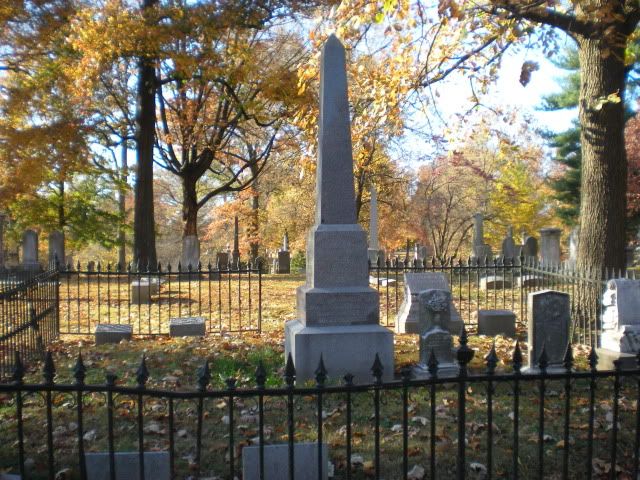
Today we're just going to talk about the history of the cemetery and touch on a few interesting sites that aren't on the walking tour. Bellefontaine Cemetery was founded in 1849 and was the first rural cemetery west of the Mississippi. Rural cemeteries were designed to be park-like, outside the hustle and bustle of the city, as well as open and accessible to all, regardless of race, religion, or class.
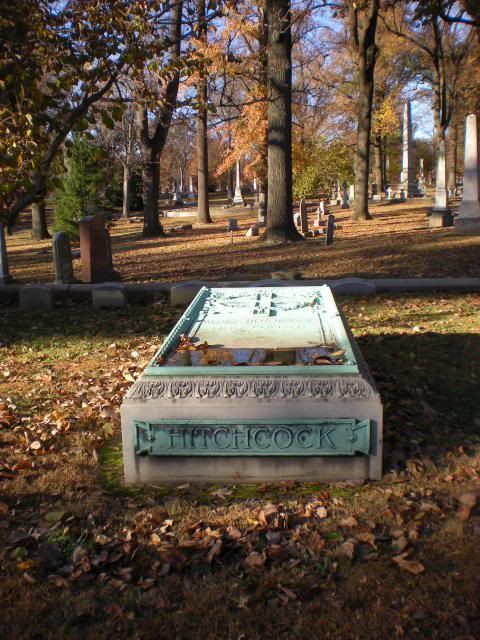
Many St Louisans will tell you that Bellefontaine is a beautiful place to visit in the fall, but what they may not realize is the reason the fall color is so striking here. Up until the mid-20th century, the cemetery had more variety than the Missouri Botannical Garden. According to their excellent website, they currently have 4,181 plants and 4,173 trees, representing 155 species! The picture below is the spot where I realized exactly how many different trees I was seeing at one time. I wish I could have gotten even more of the view into this picture, because it is pretty spectacular.
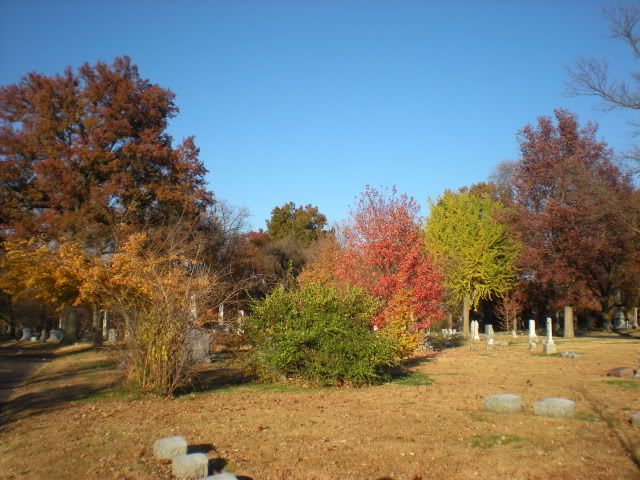
Many of the most famous mausoleums are along the river bluff on the Broadway side of the cemetery. We'll talk about those in more detail in a later post. Here I should also mention that the Lemp Reality Tour is granted access to the Lemp Mausoleum. You can bet I will be taking that tour when they start up again in the spring.
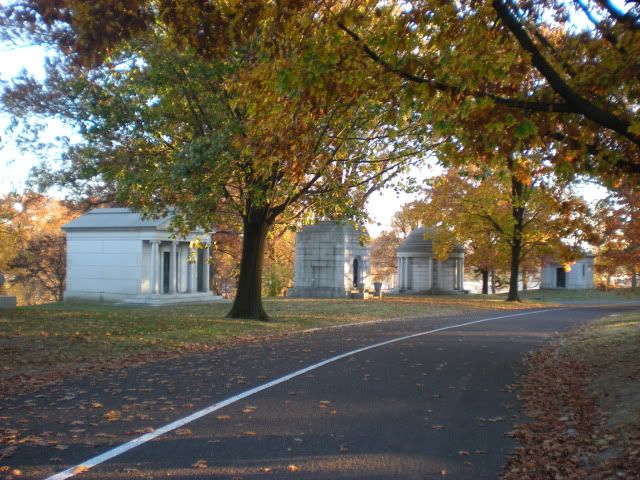
The Paramore mausoleum, which is neither on the bluff nor on the walking tour, was my favorite by far. It's the only one I saw that didn't have a door or bricked up entrance.
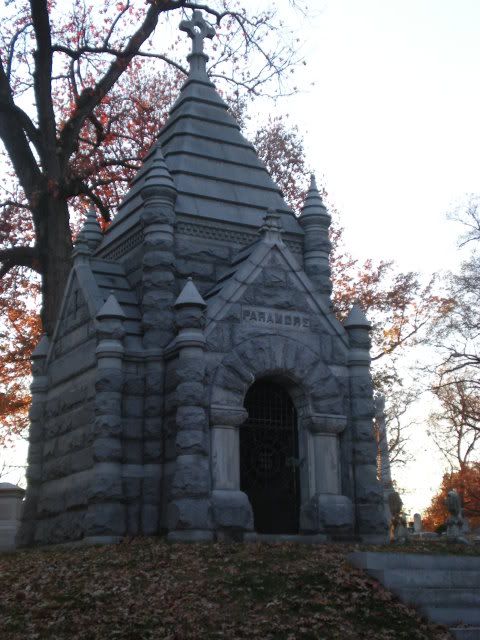
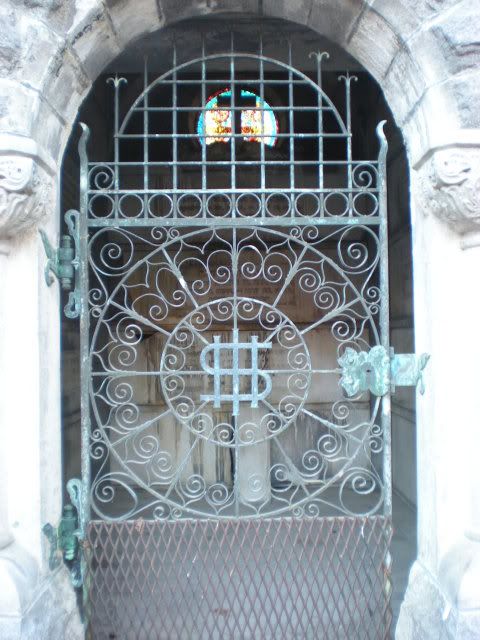
We saw the symbol on the gate quite a few times throughout the cemetery. I learned from Graveaddiction.com that it is not a dollar sign (which would have been awesome), but rather the letters IHS. Some people say these are the first three letters of Jesus's name in Greek, some say it stands for the Latin phrase "in hoc signo", which means "by this sign we conquer".
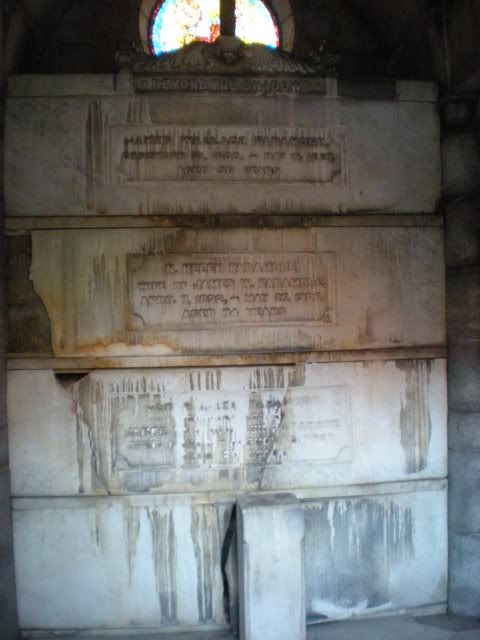
Another striking characteristic of Bellefontaine, and one I am at a loss to explain, is the style of tomb seen below. At the risk of sounding irreverent, we were calling them hobbit houses, but they do look like sod houses. Some have doors, but some are just bricked up, which reminded me a bit too much of The Cask of Amontillado.
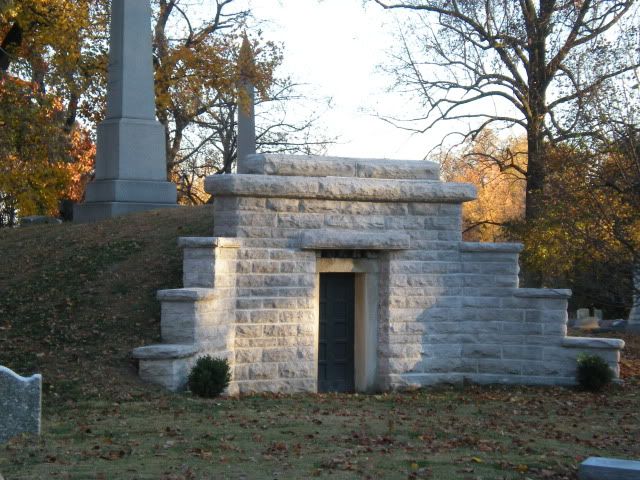
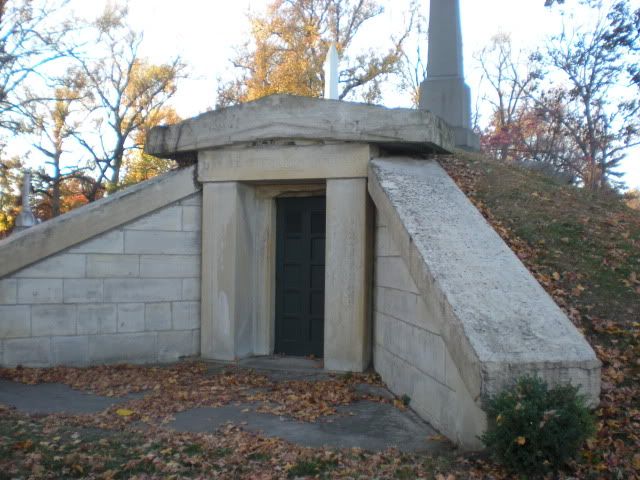
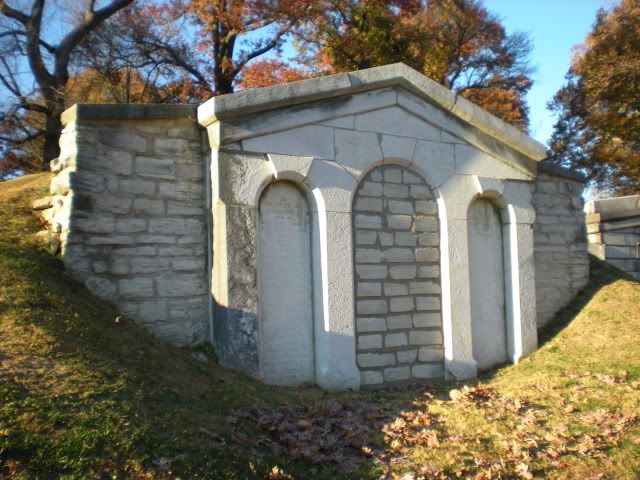
This last one is particularly interesting. It has that sunken path, is bricked up, and has a gate. I would be extremely interested in any details my readers can provide for reasoning behind any of the characteristics of this style of tomb, particularly how the interior details may differ from an above-ground mausoleum.
EDIT: I did find out that this is called a tumulus. I still want oral history kind of detail, rather than a wiki page, so make with the comments.

This is one of my very favorite things about exploring cemeteries. Every once in awhile, a marker will catch my eye and make me say, "Wow, I wonder who this person was." I joke that this is why I believe in elaborate and ostentatious grave markers, because it makes people wonder who you were long after you're gone.
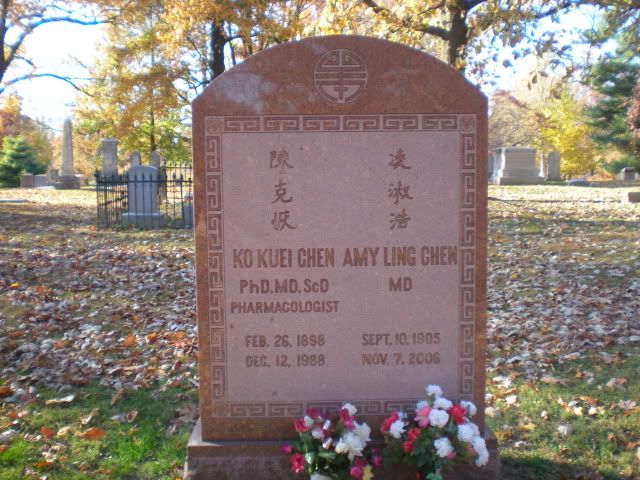
In this case, we remarked on the fact that this husband and wife, Ko Kuei Chen and Amy Ling Chen, were both Chinese doctors, lived a very long time, and must have had an interesting life. As it turns out, they were very famous doctors, and wrote over 150 articles together. K.K. Chen was the Director of Pharmacological Research at Eli Lilly for 34 years, but it is Amy Ling Chen's story that is absolutely fascinating. Too much detail for this blog, so you can read about her here, or in the book her granddaughter wrote, A Thousand Miles of Dreams: The Journeys of Two Chinese Sisters .
.
A few more interesting grave sites:
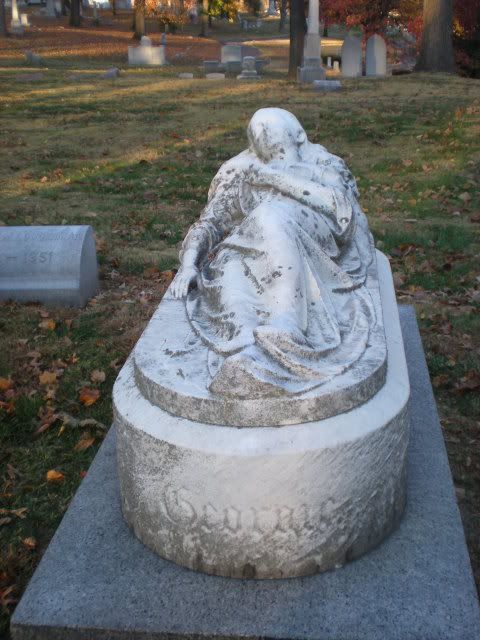
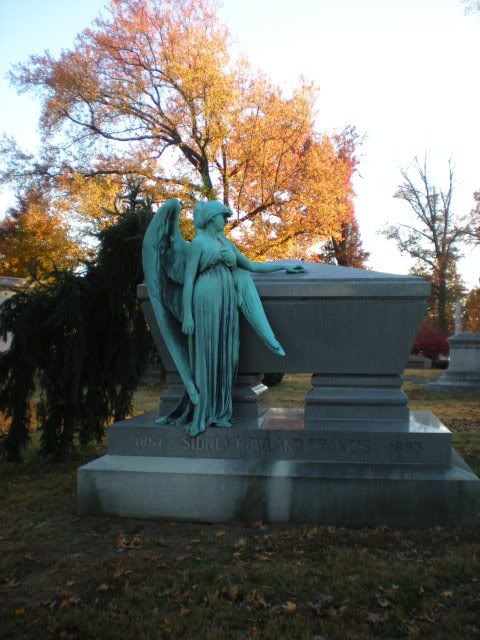
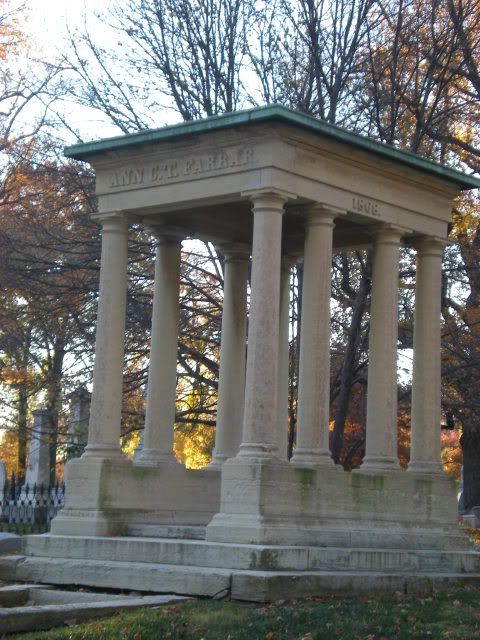
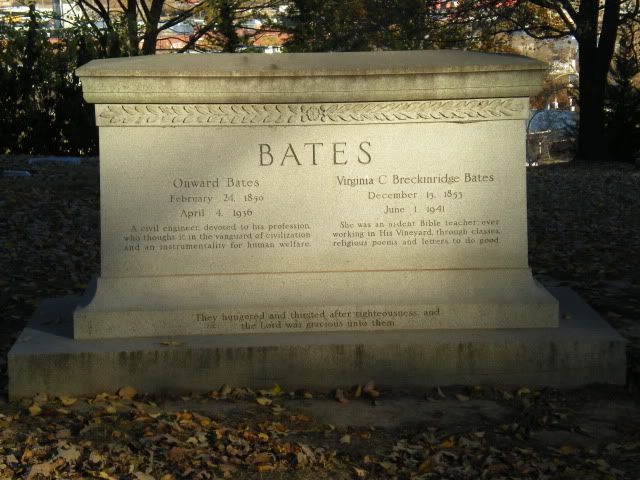
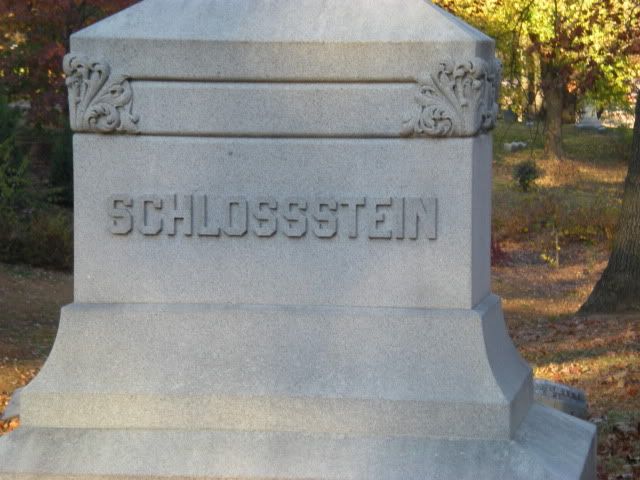
Originally 138 acres, Bellefontaine now covers 314 acres, has 14 miles of road, and two lakes. It was designed to be a part of the community, and to this day, the Cemetery Association works with area community organizations to improve their neighborhood and plan future development of the surrounding areas so that Bellefontaine Cemetery will always be a lovely and educational place to visit. I encourage you to visit their absolutely peerless website for more information, as well as details on the many types of tours they offer.

Francis and I nerded out with the historic walking tour yesterday, but that will be part two (and maybe three) of this series. My Grandma gave me the walking tour map, but if you are interested, I believe you can pick them up at the office. The office is open for inquiries seven days a week, from 8-4:30.

Today we're just going to talk about the history of the cemetery and touch on a few interesting sites that aren't on the walking tour. Bellefontaine Cemetery was founded in 1849 and was the first rural cemetery west of the Mississippi. Rural cemeteries were designed to be park-like, outside the hustle and bustle of the city, as well as open and accessible to all, regardless of race, religion, or class.

Many St Louisans will tell you that Bellefontaine is a beautiful place to visit in the fall, but what they may not realize is the reason the fall color is so striking here. Up until the mid-20th century, the cemetery had more variety than the Missouri Botannical Garden. According to their excellent website, they currently have 4,181 plants and 4,173 trees, representing 155 species! The picture below is the spot where I realized exactly how many different trees I was seeing at one time. I wish I could have gotten even more of the view into this picture, because it is pretty spectacular.

Many of the most famous mausoleums are along the river bluff on the Broadway side of the cemetery. We'll talk about those in more detail in a later post. Here I should also mention that the Lemp Reality Tour is granted access to the Lemp Mausoleum. You can bet I will be taking that tour when they start up again in the spring.

The Paramore mausoleum, which is neither on the bluff nor on the walking tour, was my favorite by far. It's the only one I saw that didn't have a door or bricked up entrance.


We saw the symbol on the gate quite a few times throughout the cemetery. I learned from Graveaddiction.com that it is not a dollar sign (which would have been awesome), but rather the letters IHS. Some people say these are the first three letters of Jesus's name in Greek, some say it stands for the Latin phrase "in hoc signo", which means "by this sign we conquer".

Another striking characteristic of Bellefontaine, and one I am at a loss to explain, is the style of tomb seen below. At the risk of sounding irreverent, we were calling them hobbit houses, but they do look like sod houses. Some have doors, but some are just bricked up, which reminded me a bit too much of The Cask of Amontillado.



This last one is particularly interesting. It has that sunken path, is bricked up, and has a gate. I would be extremely interested in any details my readers can provide for reasoning behind any of the characteristics of this style of tomb, particularly how the interior details may differ from an above-ground mausoleum.
EDIT: I did find out that this is called a tumulus. I still want oral history kind of detail, rather than a wiki page, so make with the comments.

This is one of my very favorite things about exploring cemeteries. Every once in awhile, a marker will catch my eye and make me say, "Wow, I wonder who this person was." I joke that this is why I believe in elaborate and ostentatious grave markers, because it makes people wonder who you were long after you're gone.

In this case, we remarked on the fact that this husband and wife, Ko Kuei Chen and Amy Ling Chen, were both Chinese doctors, lived a very long time, and must have had an interesting life. As it turns out, they were very famous doctors, and wrote over 150 articles together. K.K. Chen was the Director of Pharmacological Research at Eli Lilly for 34 years, but it is Amy Ling Chen's story that is absolutely fascinating. Too much detail for this blog, so you can read about her here, or in the book her granddaughter wrote, A Thousand Miles of Dreams: The Journeys of Two Chinese Sisters
A few more interesting grave sites:





Originally 138 acres, Bellefontaine now covers 314 acres, has 14 miles of road, and two lakes. It was designed to be a part of the community, and to this day, the Cemetery Association works with area community organizations to improve their neighborhood and plan future development of the surrounding areas so that Bellefontaine Cemetery will always be a lovely and educational place to visit. I encourage you to visit their absolutely peerless website for more information, as well as details on the many types of tours they offer.
Labels:
bellefontaine cemetery,
graves,
st louis
Subscribe to:
Posts (Atom)

















